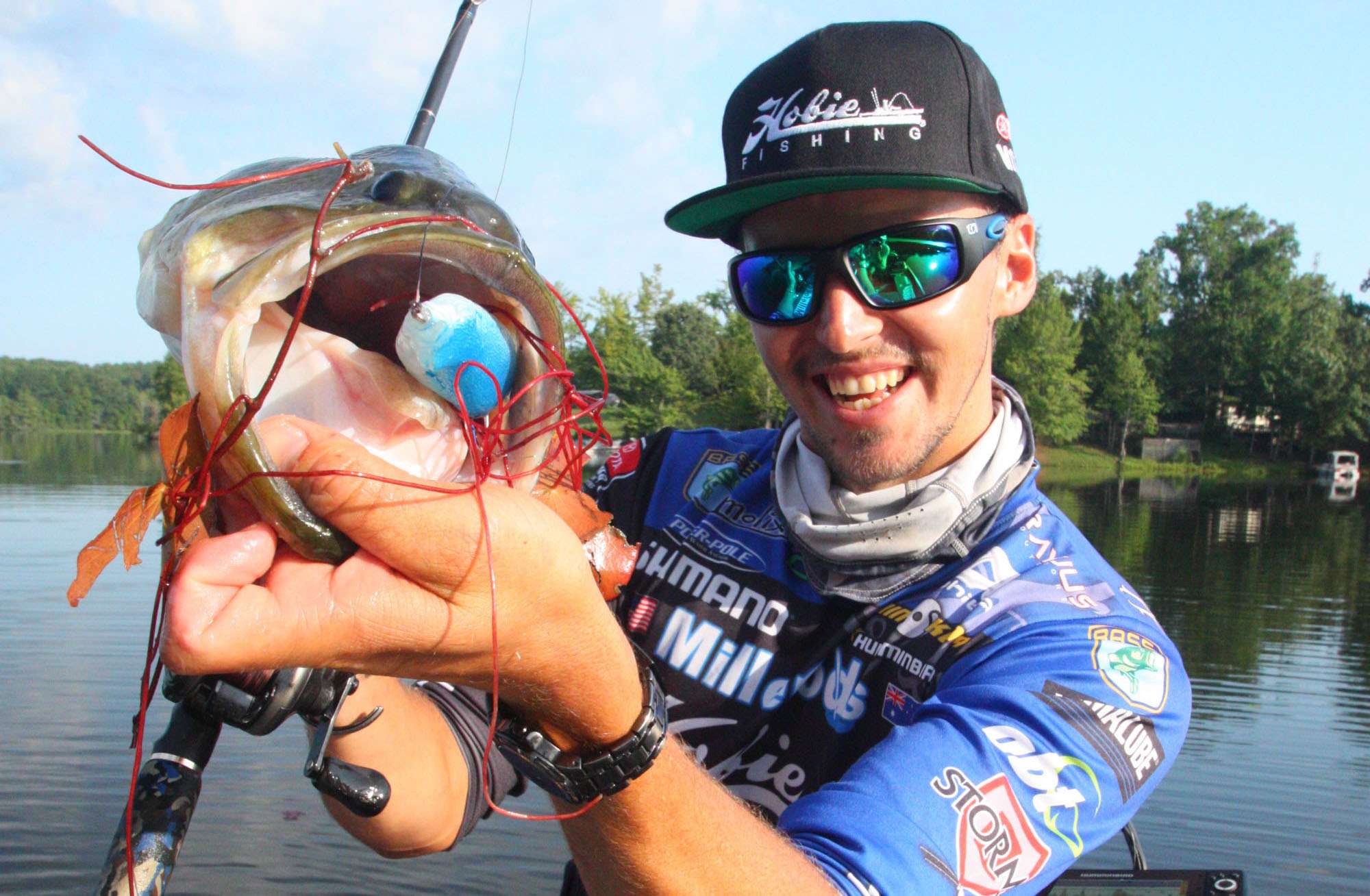
6:39 a.m. Fog shrouds the water as Jocumsen and I arrive at Lake Lâs deserted boat ramp.
7 HOURS LEFT6:45 a.m. We launch the Bass Cat. Jocumsen checks the lake temp: 83 degrees. What pattern does he foresee being operative today? âSummer bass normally relate to deep structure and shallow vegetation. Iâll need to take a tour of the lake to check out those options, but I want to first try some topwater before the sun burns off the fog.â As Jocumsen pulls an assortment of Miller rods equipped with Shimano reels from storage, I ask him about the bass fishing scene in his native Queensland. âI competed in Australian bass tournaments for 10 years before moving to the States. The Australian bass is totally different from the American largemouth; a really big one weighs about 5 pounds. Australia is best known for its amazing saltwater fishing, but there are many exciting freshwater species there, including the Murray cod, which can weigh over 100 pounds. The various species I targeted back home all required different lures and tactics; this combined experience helped me adjust to American bass fishing surprisingly quickly. One thing I had to learn from scratch, however, was jig fishing â I had never fished a jig, nor pitched or flipped, before I moved here.â 6:53 a.m. Jocumsen idles to a nearby shoreline and makes his first casts with a bone-colored Reaction Innovations Vixen topwater stickbait.
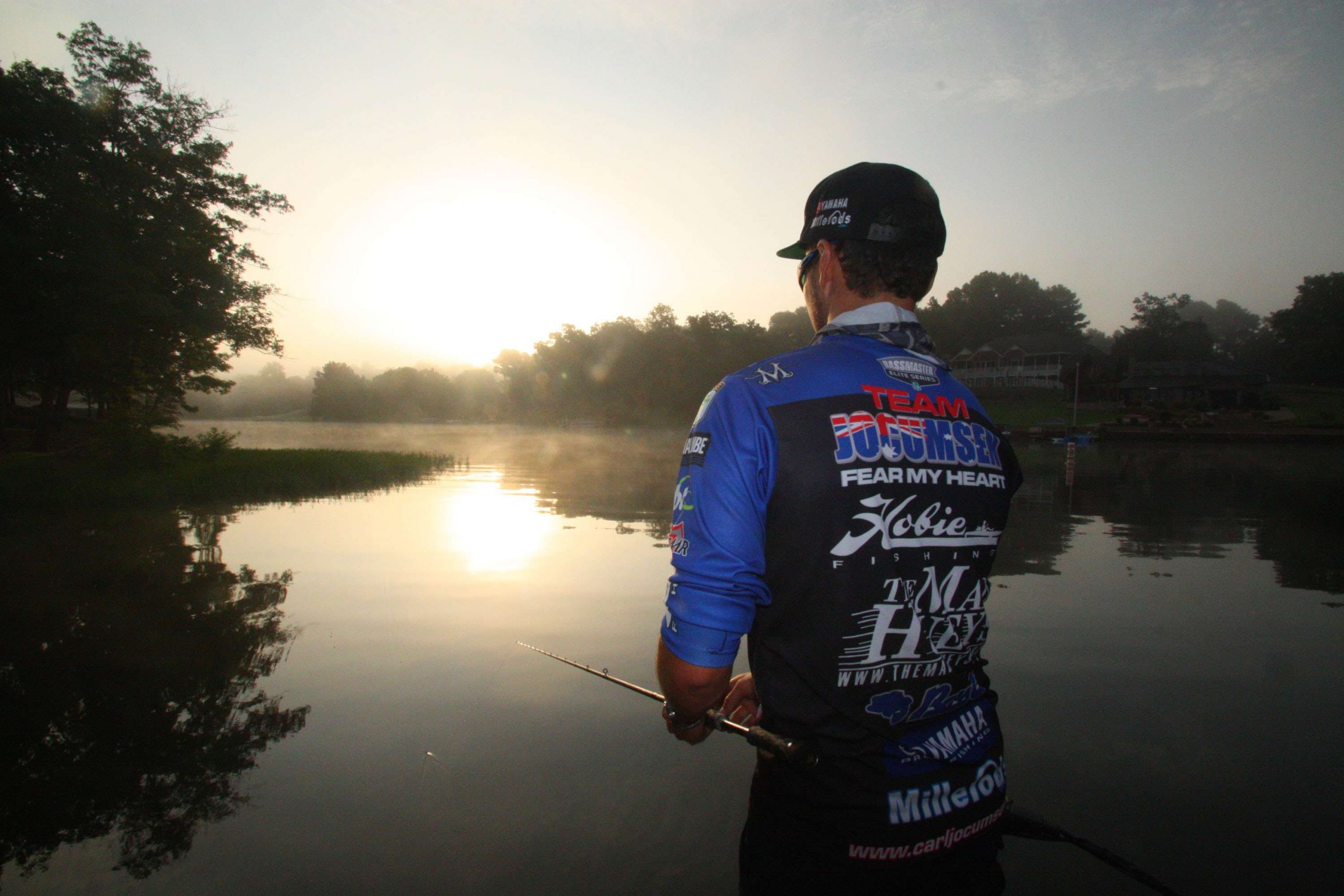
6 HOURS LEFT7:45 a.m. Still hitting riprap with the jig. âI saw some baitfish surfacing earlier, but thereâs been less activity since the fog lifted.â 7:52 a.m. Jocumsen rockets uplake to a tributary arm, where he finds an abundance of pad cover. He begins casting the weedless rat to the vegetation, shaking his rod tip while reeling to dog-walk the lure across the cover. âThe water up here is just 78 degrees, so the fish should be active.â
8 a.m. As Jocumsen retrieves the rat across some pads into open water, a bass sucks it under but doesnât hook up. âThat was a good fish!â 8:07 a.m. Jocumsen bags his first keeper of the day, a 1-pound, 4-ounce largemouth, from the pads on the rat. âThis skinny guy was way back in there. If heâd been eating properly, heâd weigh 3 pounds!â 8:10 a.m. Jocumsen resumes casting the rat to the pads. âIâm all about a stealthy approach, and when fishing pads, Iâll move to the spot I want to fish with my trolling motor on low, then wait to cast until the boat is sitting still. Besides being less obtrusive, this keeps my line dead straight during the retrieve instead of in an arch, which guarantees more hookups because thereâs less slack.â
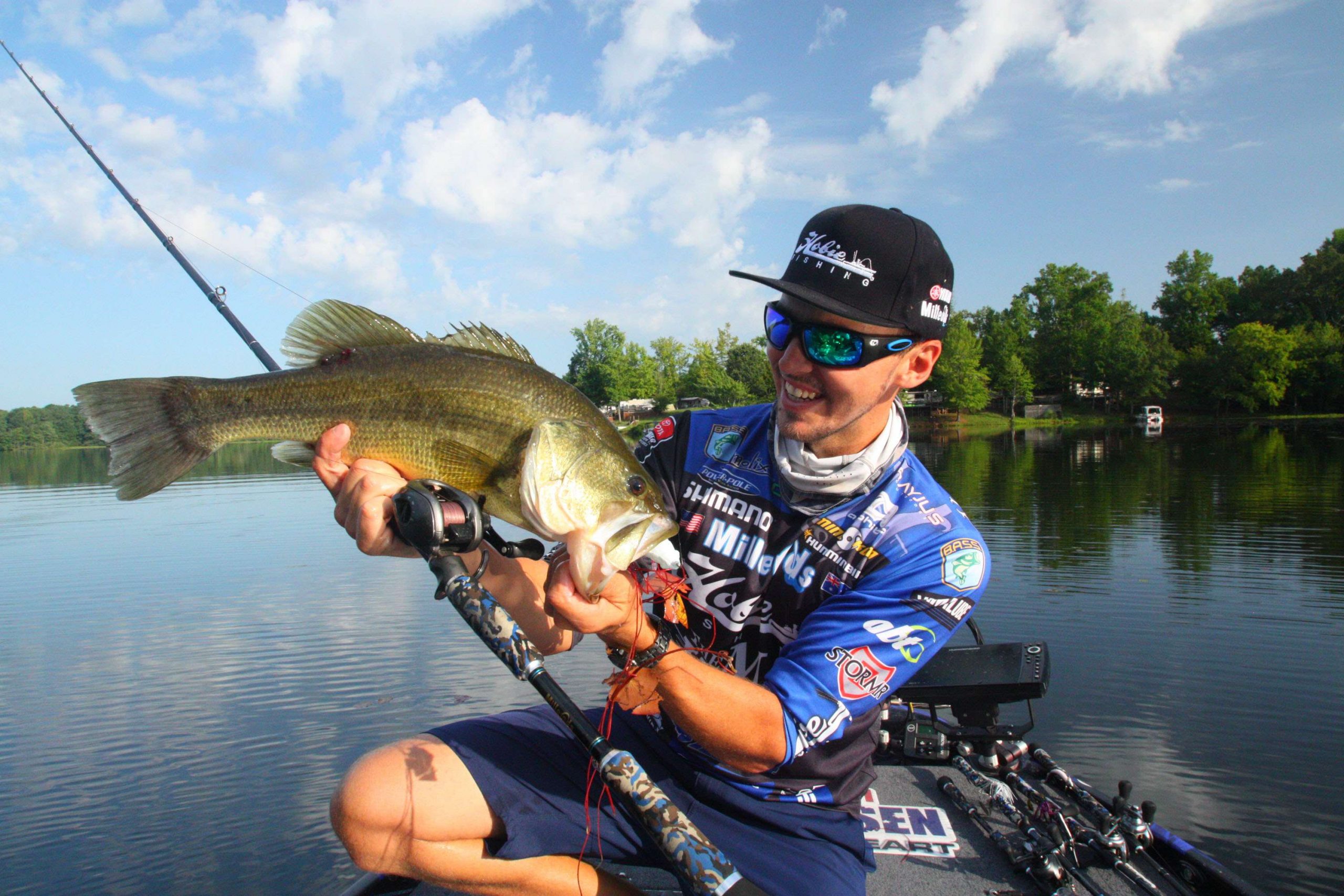
5 HOURS LEFT8:47 a.m. Jocumsen moves 50 yards to a spot where larger pads mix with the small âdollarâ pads heâs been fishing. âThose big pads are tougher to get your lure through. You need to keep your rod tip elevated so your line doesnât tangle in them.â
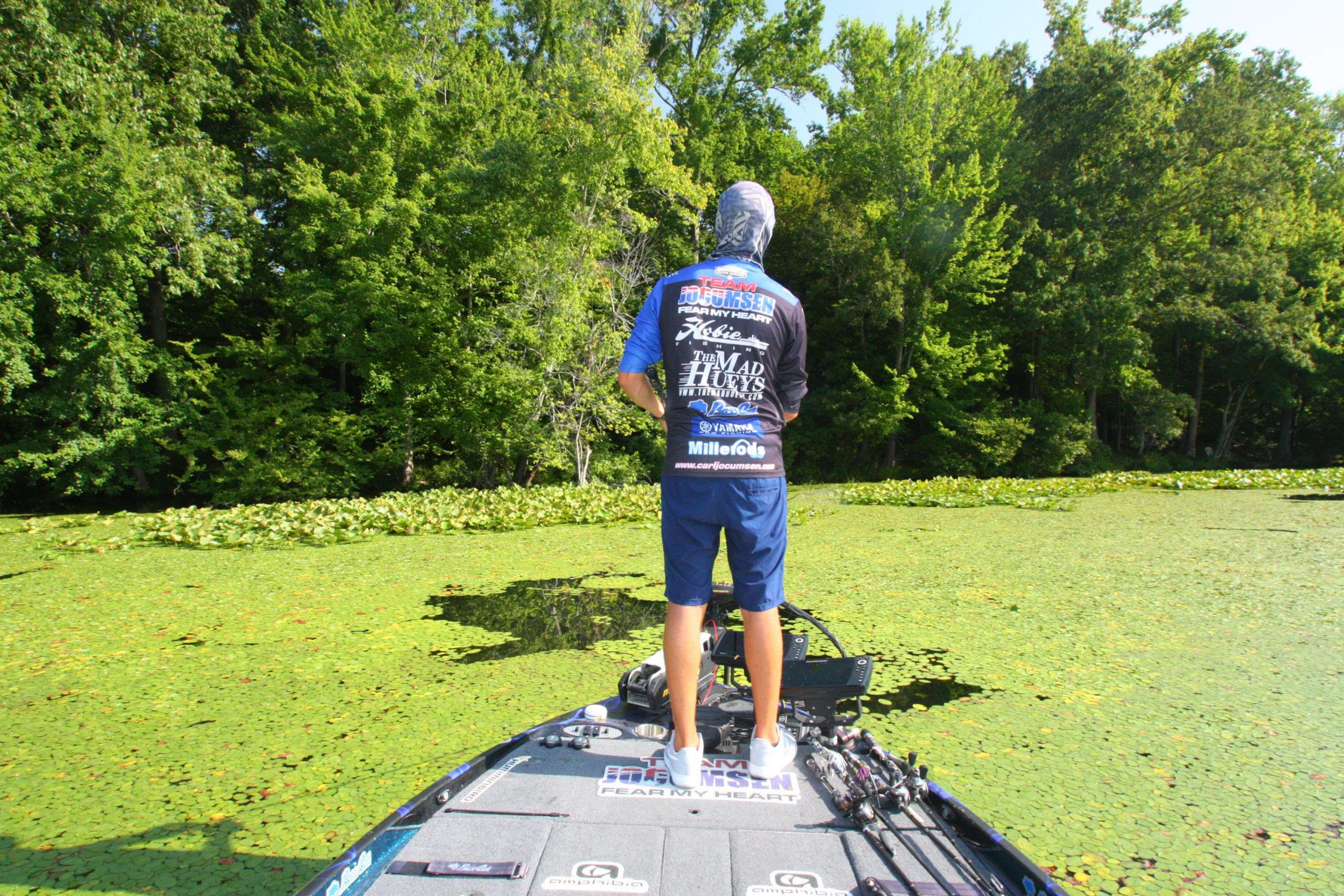
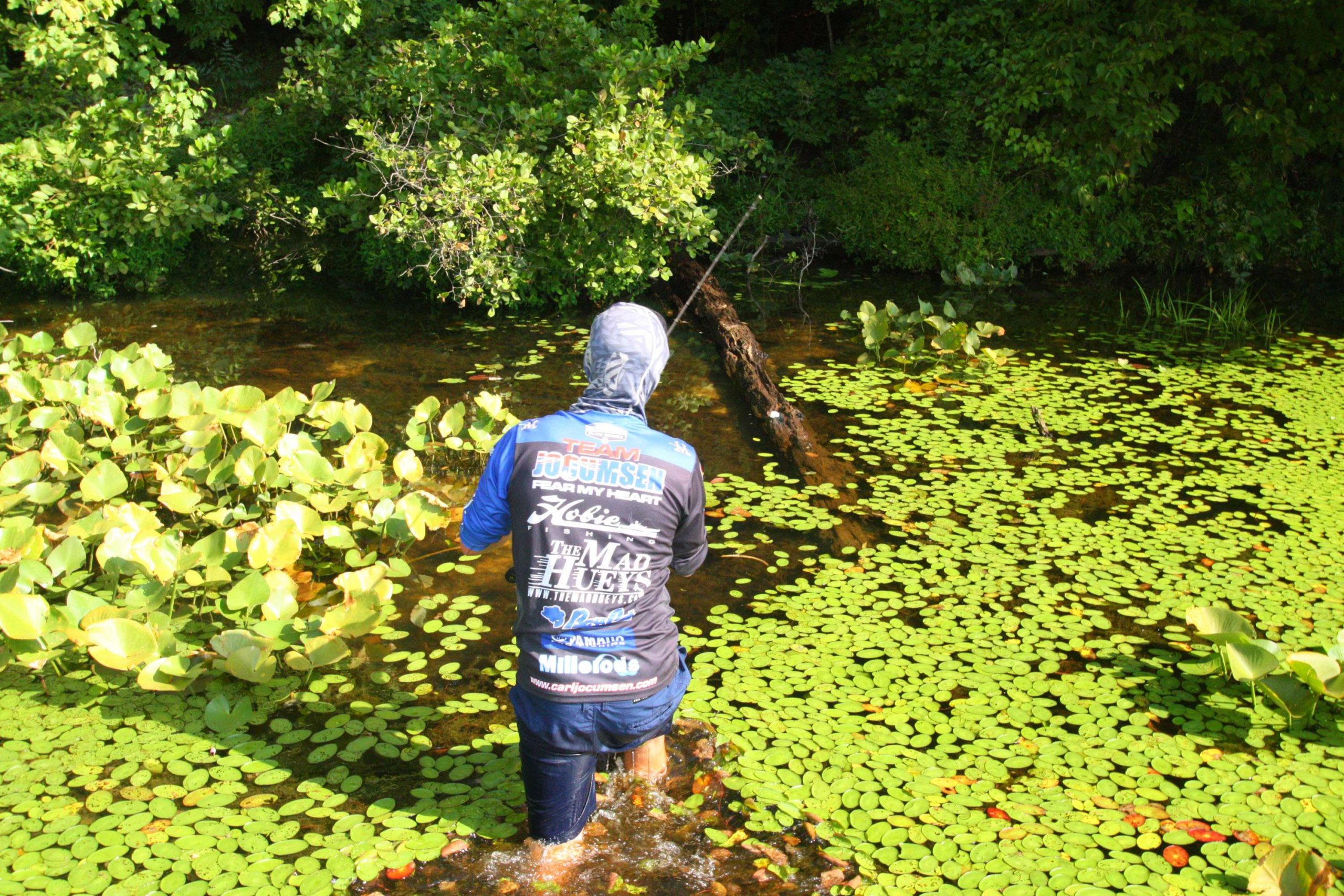
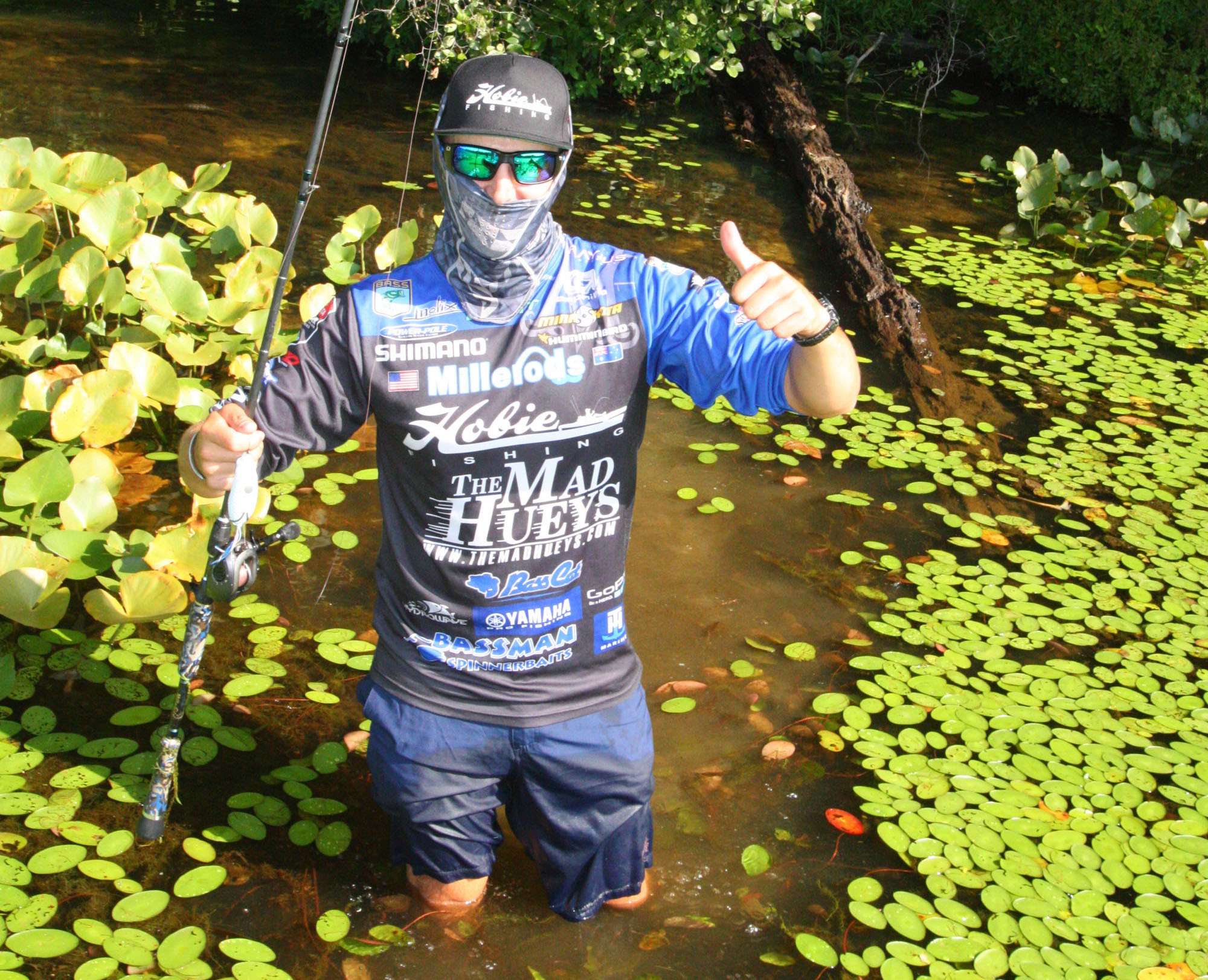
4 HOURS LEFT9:45 a.m. Jocumsen heads straight across the creek mouth while casting the swim jig around the edge of the pads. âIâm seeing some clumps of hydrilla out in open water.â 9:52 a.m. He swims a crystal shad 3/8-ounce Bassman bladed jig with a Molix RA Shad trailer across the hydrilla. A 5-pound bass shoots out of the grass and nips the lureâs trailer. âWow, that was a good fish!â 10:04 a.m. Back where he caught his two keepers, Jocumsen resumes walking the rat across pads. 10:16 a.m. Jocumsen vacates the tributary and moves to an isolated patch of pads on the main lake. Some cloud cover is starting to move in as he tries the rat. 10:21 a.m. He moves out from the pads and swims the bladed jig across a submerged hydrilla bed. 10:26 a.m. Jocumsen Texas rigs a Reaction Innovations Sweet Beaver creature in the California 420 color on a stout flipping hook with a 1-ounce pegged sinker, then proceeds to flip it into the hydrilla. âI bet this grass never gets fished. Most local anglers hate this stuff.â 10:34 a.m. The pads are calling, so Jocumsen resumes casting the rat to the vegetation.
3 HOURS LEFT10:45 a.m. This spot fails to pay off, so Jocumsen moves a quarter-mile downlake to another stand of waterlilies, which he hits with the rat and the swim jig. Storm clouds are building up around us and thunder rolls in the distance.
10:49 a.m. He swims the bladed jig across the top of a submerged hydrilla bed. âI canât believe Iâve only seen one fish around this grass.â
10:52 a.m. Jocumsen retrieves the swim jig over the hydrilla. A fish rolls on it. âFalse alarm; that was a gar.â
![<b>11:02 a.m.</b> Jocumsen decides to shift gears and fish a nearby main-lake point. The structure is shallow on top, studded with stumps and drops off into 16 feet on either side. He pulls out several crankbait boxes and selects a crawfish colored Molix Sculpo deep-diver. âI caught lots of fish on this bait at the 2016 Bull Shoals [Arkansas] Elite tournament, so Iâve got confidence in it.â He casts the plug to the end of the point and dredges up a wad of grass. <br>
<b>11:06 a.m.</b> Jocumsen switches to a shad pattern Strike King 6XD crankbait and grinds it off the side of the point. <br>
<b>11:09 a.m.</b> He replaces the 6XD with a perch-colored Molix F Crank DR. âIâm seeing some suspended fish on my electronics, but so far I havenât found the right trigger for them.â <br>
<b>11:11 a.m.</b> A bass bumps the F Crank but doesnât hook up. Jocumsen immediately casts the swimbait with the belly spinner to the same spot. No takers. <br>
<b>11:14 a.m.</b> Jocumsen opts to try a finesse worm off the point. He rigs a Roboworm in the margarita mutilator color on a No. 1 drop-shot hook, attaches a 12-inch drop line with a 3/8-ounce sinker below the lure, then drags it across rocks on the bottom. He immediately detects a bite, tightens down on the fish and swings a nonkeeper aboard. âIâm seeing several fish on my electronics, and they donât all look this small.â <br>
<b>11:17 a.m.</b> A good fish picks up the Roboworm. Jocumsen sticks it momentarily, but it comes unbuttoned. âThat one felt solid.â Whatâs his take on the day so far? âThe early pad bite looked promising, but it died off quickly and Iâve been struggling ever since. There are some big fish in this lake, and Iâm hoping I can get something going. Iâll fish out this point, hit a couple other deep structures, make a quick pass through some more pads, then hit the dam once more in my remaining time.â <br>
<b>11:20 a.m.</b> Jocumsen catches a microbass on the Roboworm. <br>
<b>11:21 a.m.</b> Another tiny bass eats the Roboworm. âIâm still seeing some big fish down there on my electronics.â <br>
<b>11:24 a.m.</b> Jocumsen casts the spinnerbait to the same spot and slow rolls it through the water column. As it nears the boat, he marks a big fish moving up from deep water toward the bait on his graph, but it doesnât strike. <br>
<b>11:27 a.m.</b> Having followed the point toward shore, Jocumsen switches crankbaits to a shad colored Lucky Craft 2.5 squarebill and retrieves it parallel to the edge of the structure. <br>
<b>11:40 a.m.</b> Back to the Roboworm on the point. A bass strips the worm off the rig.
<p>
<b>2 HOURS LEFT</b><br>
<b>11:45 a.m.</b> The squarebill dredges up a wad of snot grass. <br>
<b>11:51 a.m.</b> Jocumsen makes a short hop back to the pads where he caught his two keepers and drags the rat across the cover. <br>
<b>11:59 a.m.</b> He moves to a point at the tributary entrance and tries the swim jig around submerged hydrilla.](http://www.bassmaster.com/wp-content/uploads/2019/12/11-02_dotl_jocumsen17-scaled.jpg)
2 HOURS LEFT11:45 a.m. The squarebill dredges up a wad of snot grass. 11:51 a.m. Jocumsen makes a short hop back to the pads where he caught his two keepers and drags the rat across the cover. 11:59 a.m. He moves to a point at the tributary entrance and tries the swim jig around submerged hydrilla.
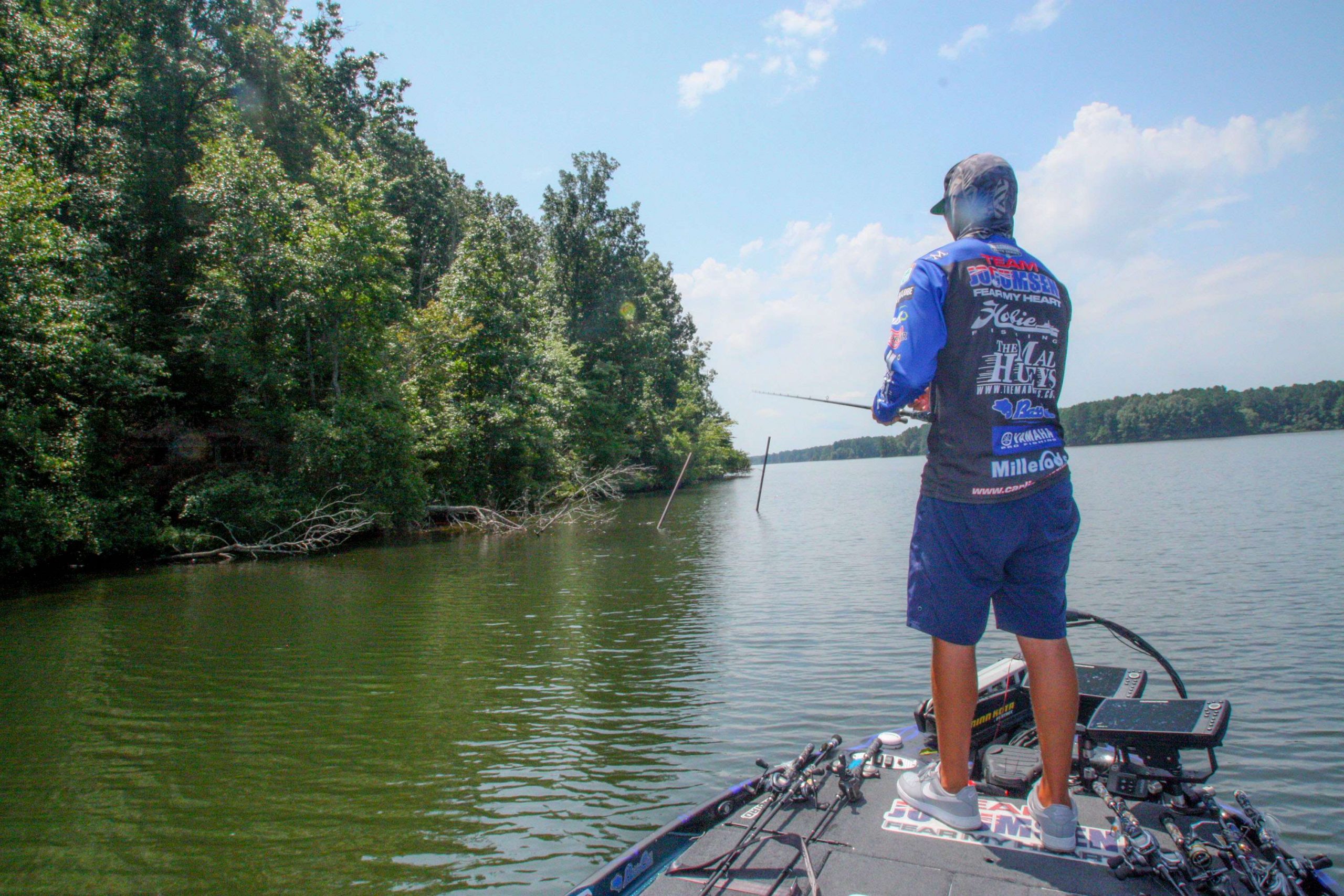
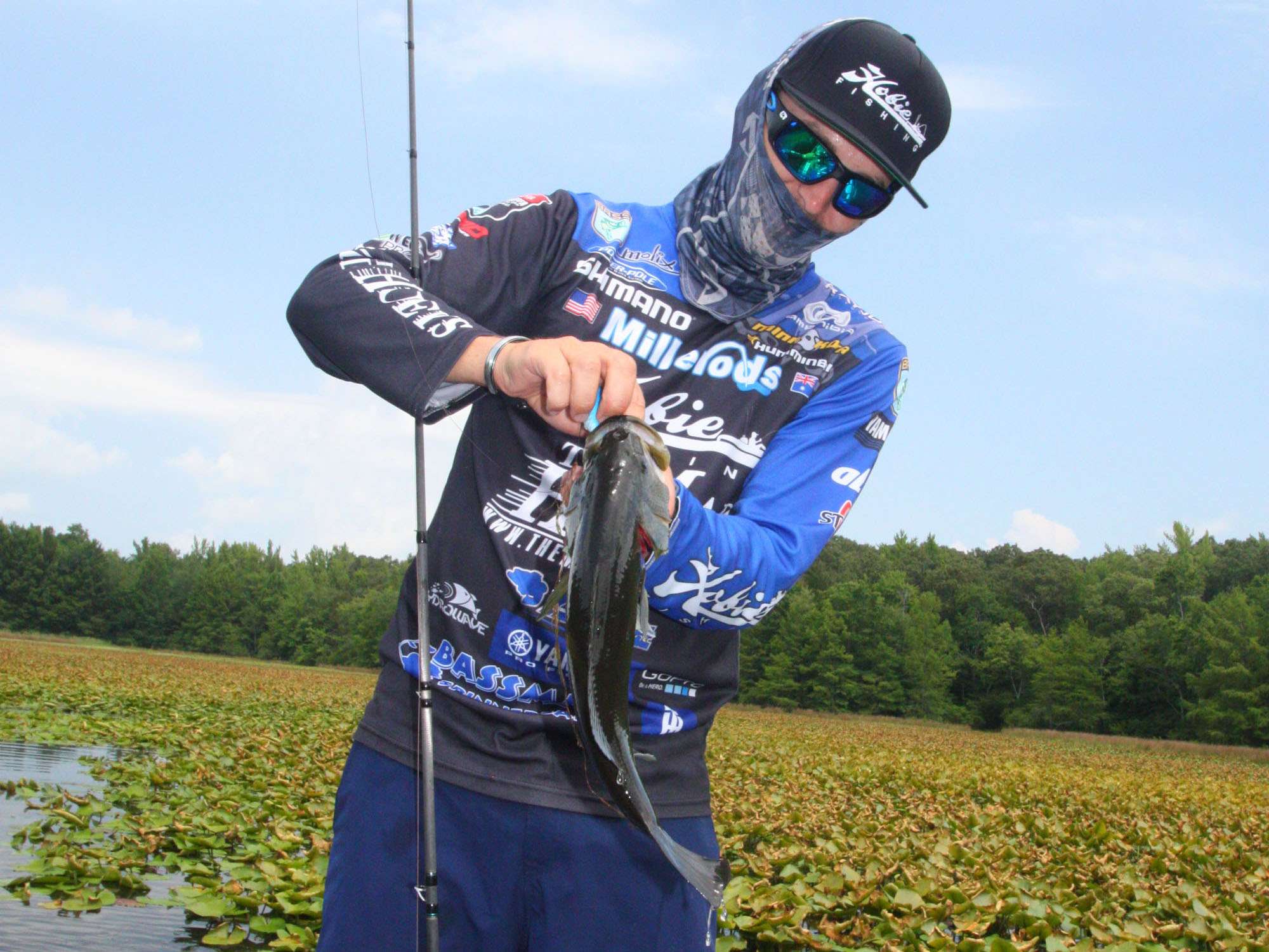
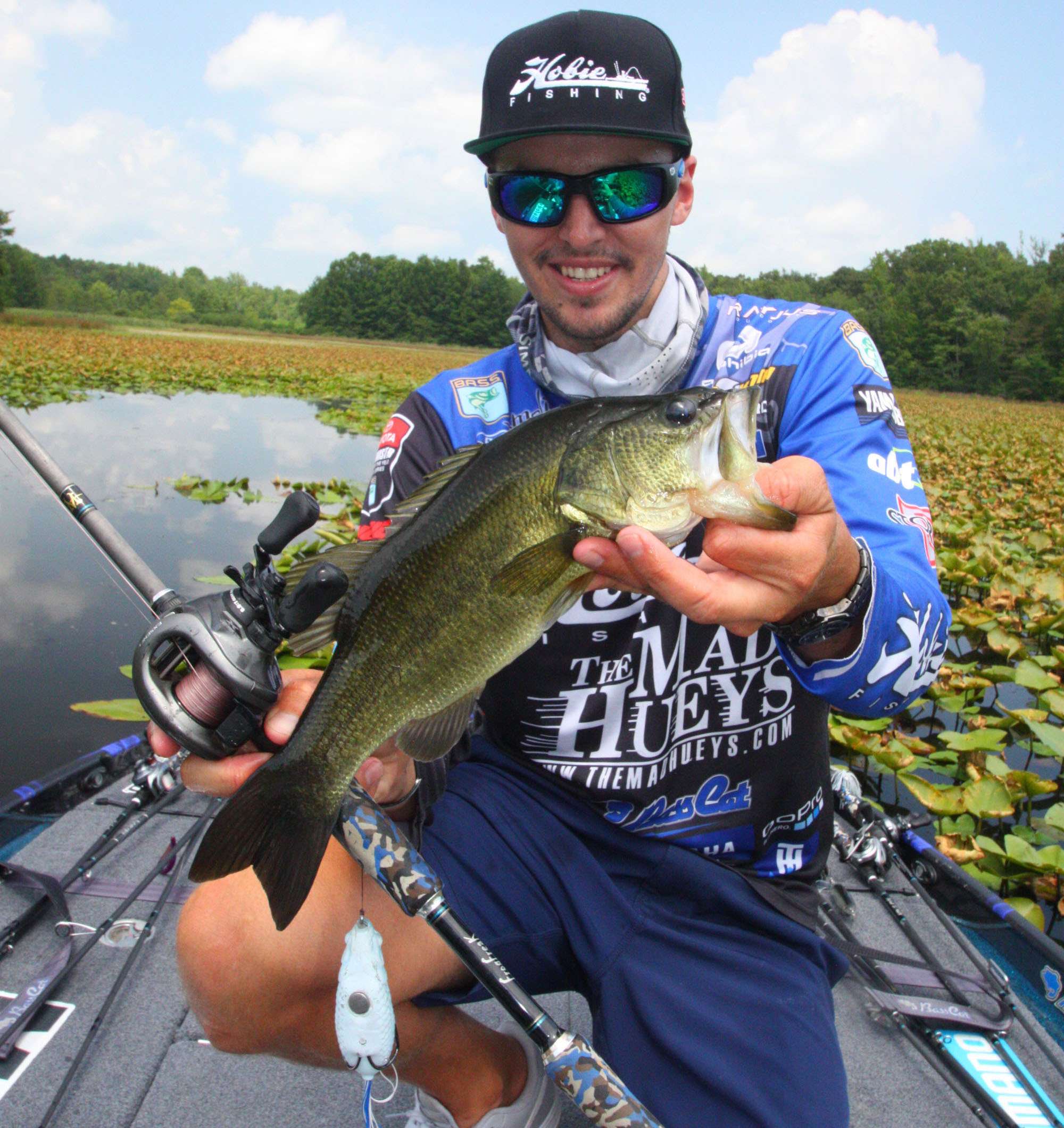
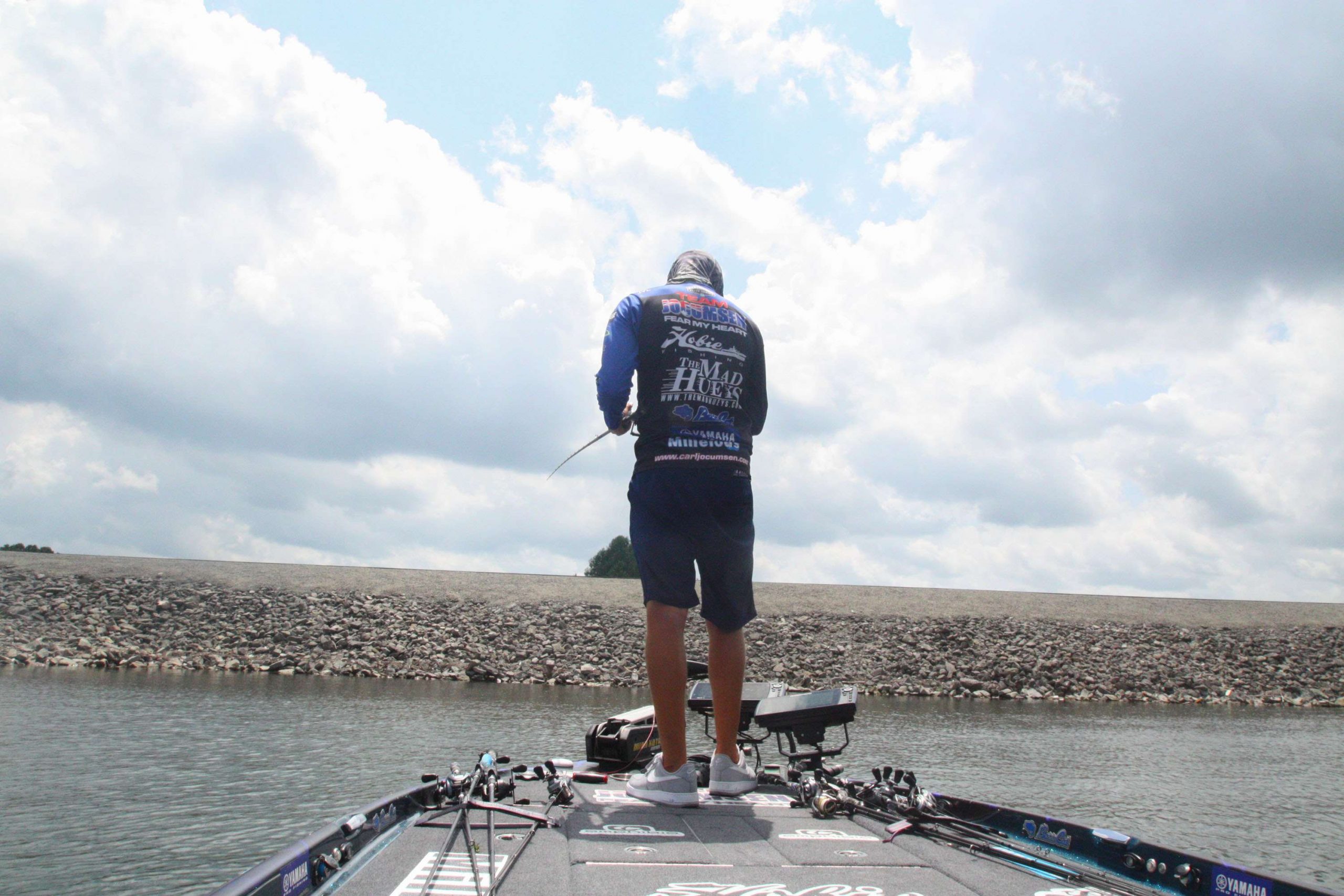
THE DAY IN PERSPECTIVE
âI thought I was onto something when I caught that 4-15 out of the pads early, but I couldnât get on any more big fish on that pattern,â Jocumsen told Bassmaster. âI had a lot more bites off deep structure than I did in the pads, but they were mostly from very small fish. Still, I didnât move out deeper until 11 a.m., so I didnât have much time left to locate more deep places that might have held bigger fish. If I were to fish here tomorrow, Iâd head straight to those tributary pads and hit them hard until the bite tapered off, then Iâd nose around offshore and look for more deep spots instead of rehitting the pad fields that didnât produce for me today.â
WHERE AND WHEN CARL JOCUMSEN CAUGHT HIS KEEPER BASS
1 pound, 4 ounces; blue and white Molix WTD weedless surface rat; lily pads near tributary mouth; 8:07 a.m.
4 pounds, 15 ounces; same lure and place as No. 1; 8:13 a.m.
2 pounds, 2 ounces; same lure as No. 1; lily pads in upper end; 12:48 p.m.
TOTAL: 8 POUNDS, 5 OUNCES
